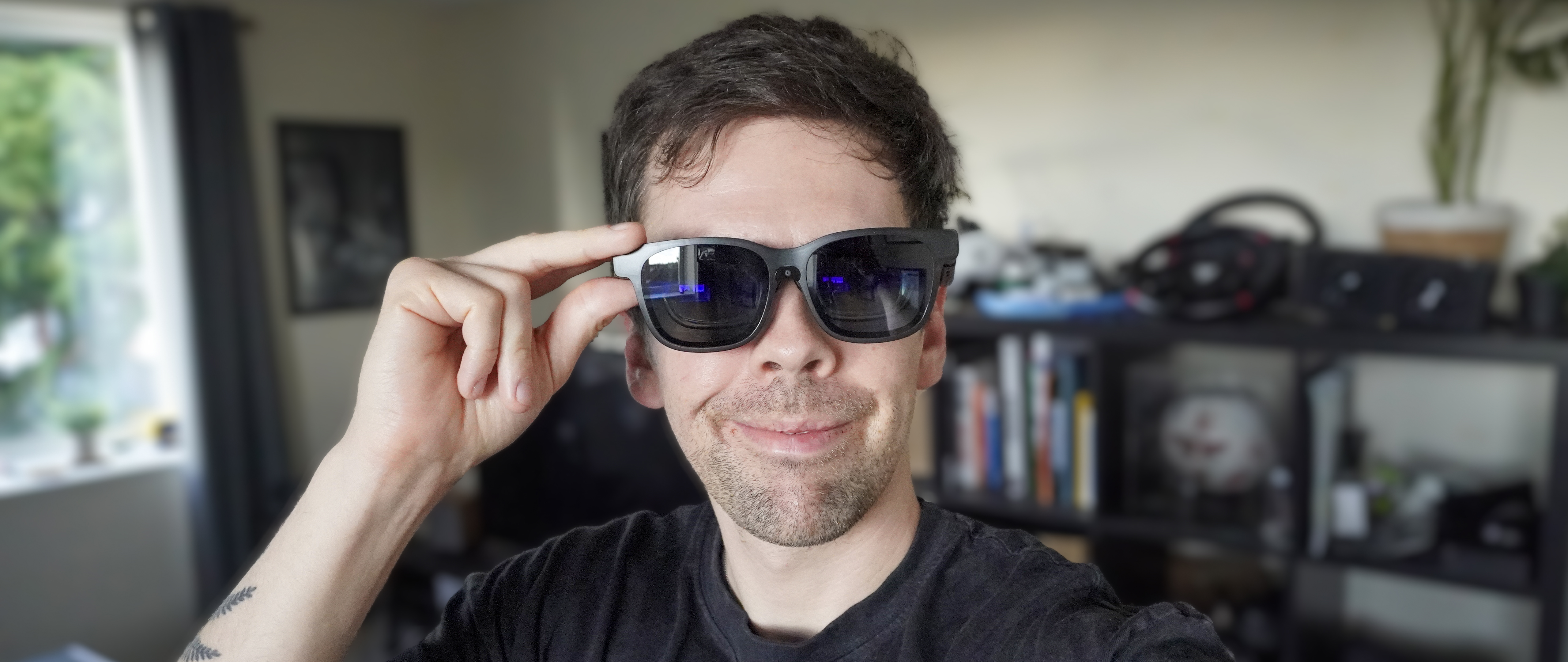Tom's Guide Verdict
The Viture Luma Pro is another sizable step forward in image quality at this price. You'll get impressive clarity and mesmerizing color packed into a seriously sleek pair of specs. If you’re already rocking the Viture Pros, this upgrade isn’t necessary, but these are easily some of the best AR glasses you can cop right now.
Pros
- +
The Micro-OLED display tech is so gorgeous
- +
Effective Electrochromic film
- +
Slick semi-transparent design
- +
Small enough to not look weird
- +
Wider field of view
Cons
- -
Sound still on the quiet side
- -
No on-board chip for display tweaks
- -
Some features not available yet
Why you can trust Tom's Guide
Once I ditched the monitors and popped on the Viture Luma Pro, I was whisked away. I can’t lie, the display tech in here is mesmerizing.
You already know the score when it comes to picking the best AR glasses — it comes down to wearability, picture quality and versatility of connection, and these specs nail it.
At $499, the Viture Luma Pro went for the throne and stuck the landing against the Xreal One glasses. Some of the reasons sound like marketing talk. A display with “4K-like clarity?” Come on now.
But if you look past this weird phrasing, there's a lot of tweaking that has gone into presenting some impressively razor sharp details — even at the far edges without any fringing whatsoever (more on this later).
Would I call them next-gen enough to say you should upgrade from the Viture Pros? No. You’ve already got a damn good pair there, and the Luma Pro glasses are more evolution rather than revolution in that respect.
Plus, Xreal does still have the jump with the X1 chip built directly into its glasses, giving you greater control over the screen to the point it can simulate an ultrawide directly on the specs themselves. Viture says this is coming with software, along with 6DoF support “after launch.” So once these features are present, I’ll update this review.
But if you’re looking for the most comfortable pair of AR glasses with the best picture quality, Luma Pro is the way to go right now. Let me explain why.
Get instant access to breaking news, the hottest reviews, great deals and helpful tips.
Viture Luma Pro: Cheat Sheet
- What is it? These are a pair of AR glasses. Viture refers to them as XR glasses — a capability largely enabled through software. But fundamentally, they remain AR specs at heart.
- Who is it for? Perfect for people who travel a lot, but also for those who want a big screen experience wherever they are.
- How much does it cost? Rather than the complex pricing structure of Viture Pro, the Luma Pro comes in smack bang at the right price of $499 — taking on Xreal One head on.
- What do I like them? That 1200p display with the next-gen micro OLED display and upgraded optics delivers a simply stunning picture. And all of this is packed into a pair of specs that are seriously comfortable to wear with plenty of flair.
- What don't I like about them? Simply put, not everything is available yet. Some of the features will arrive “after launch,” and while the sound quality is better on paper, it’s still too quiet for anywhere outside of a library.
Viture Luma Pro: Specs
Display | Sony Micro-OLED, 152-inch virtual screen with 1200p resolution, up to 1000 nits of perceived brightness, up to 120Hz refresh rate, adjustable for Myopia |
Audio | Dual speakers tuned by Harman |
Price | $499 |
Dimensions (when open) | 5.8 x 6.8 x 1.8 inches |
Weight | 2.8 ounces |
Viture Luma Pro: The ups
So yes, I have taken the Viture Luma Pro traveling, and I can assure you they’re amazing for that. But I wanted to put things on hard mode, so I took down my monitors and switched to these.
The display is *chefs kiss*
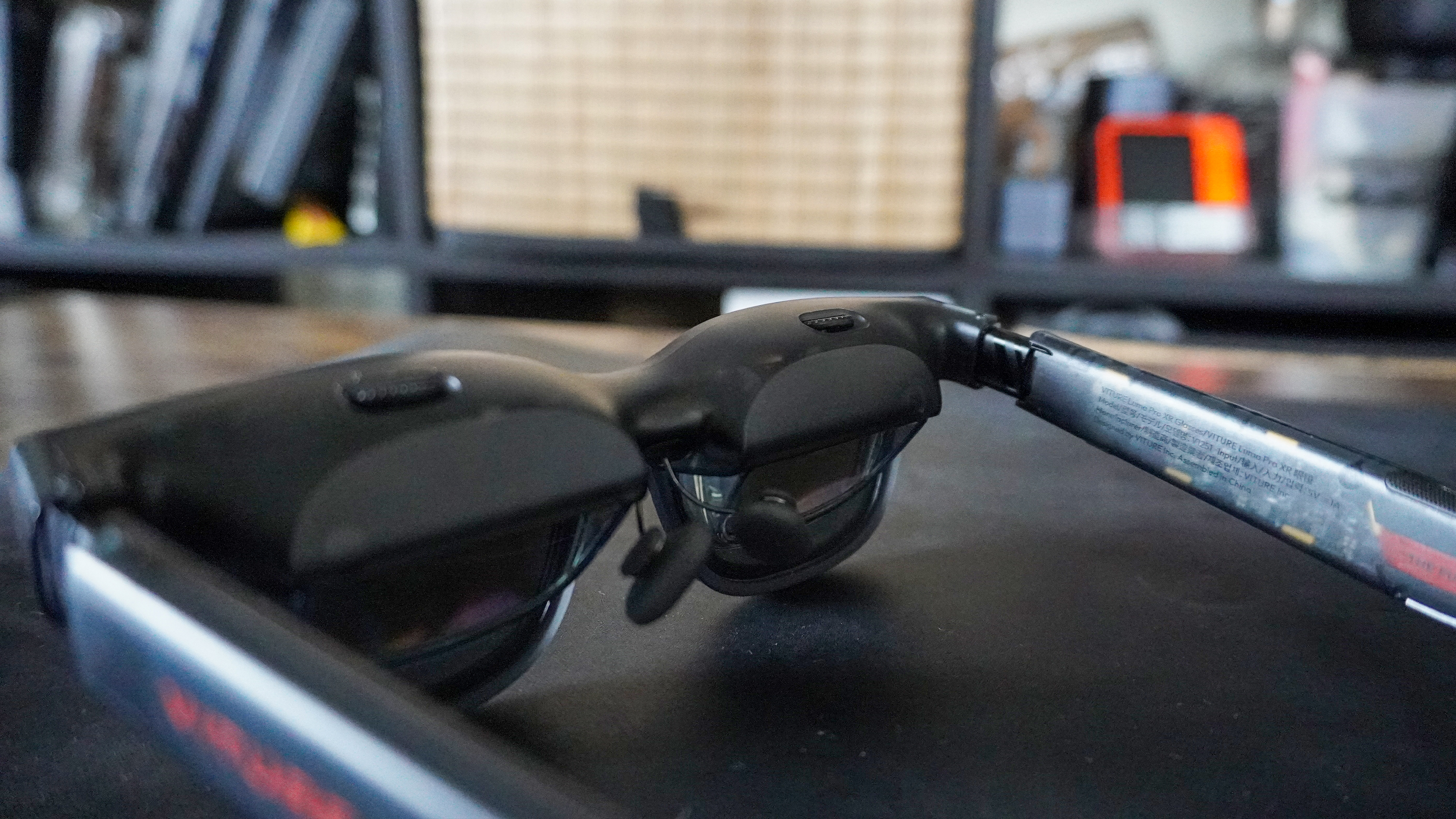
To appreciate what’s going on here, I need to get a bit geeky and tell you all about the technology behind the intangibles of the Viture Luma Pro.
You see, it starts with Sony’s micro-OLED technology — it’s a little more power efficient so you’ll get more battery life out of the phone, laptop or tablet you plug these into. But while this resolution stands at 1200p, it looks a whole lot sharper than that.
And that comes down to tweaks the team has made in improving high-frequency detail, using telescope-inspired optics to make the edges look sharp, reducing distortion, and even applying camera-grade anti-reflective materials to eliminate glare.
The end result is 152 inches of crispy picture, alongside that vivid color science Viture is known for to make your games, your work, or your Netflix shows look spectacular.
One note though, while Myopia adjustment is still here (and warmly welcomed), the amount you can change it has been reduced by two points.
Speaking to Viture, the company confirms this is because diopter adjustments can interfere with the picture quality in your peripheral vision of the 52-degree field of view — given this is now a 16:10 ratio screen.
Versatile and sleek design
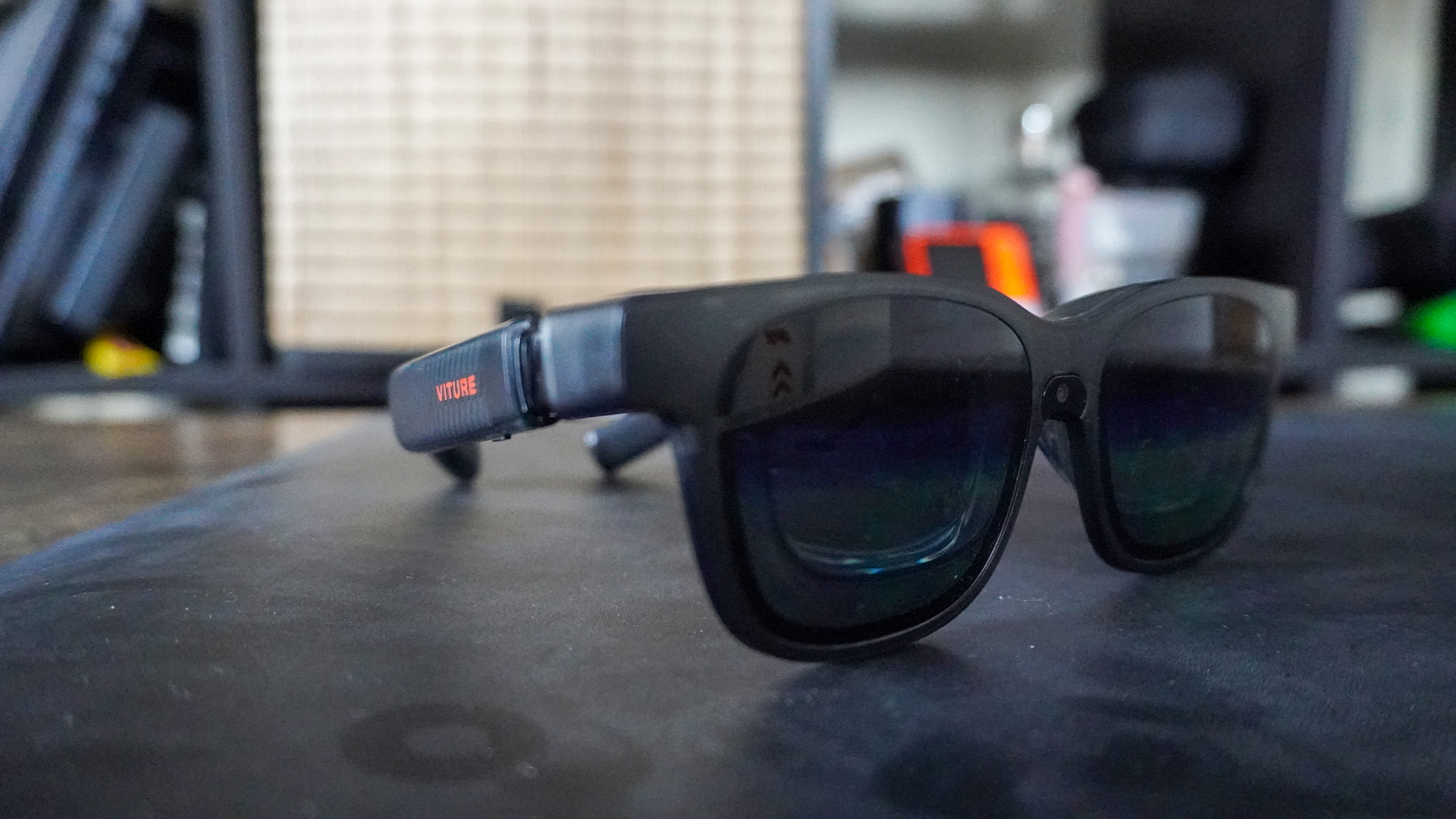
That faux-Wayfarer design is getting more and more subtle by the generation. Don’t get me wrong, the differences are small since we’re still talking about big birdbaths sitting behind the lenses. But the slight refinements in the size and shape puts them as another small step on the continual path to zero double takes when wearing them.
Then when we talk about versatility, the Luma Pros have it baked in nicely with magnetically attached nose pads (FYI: they need to sit higher on your face than you’d expect your average AR glasses to sit for the full picture), and arms that can snap into different angles for just the right wearability.
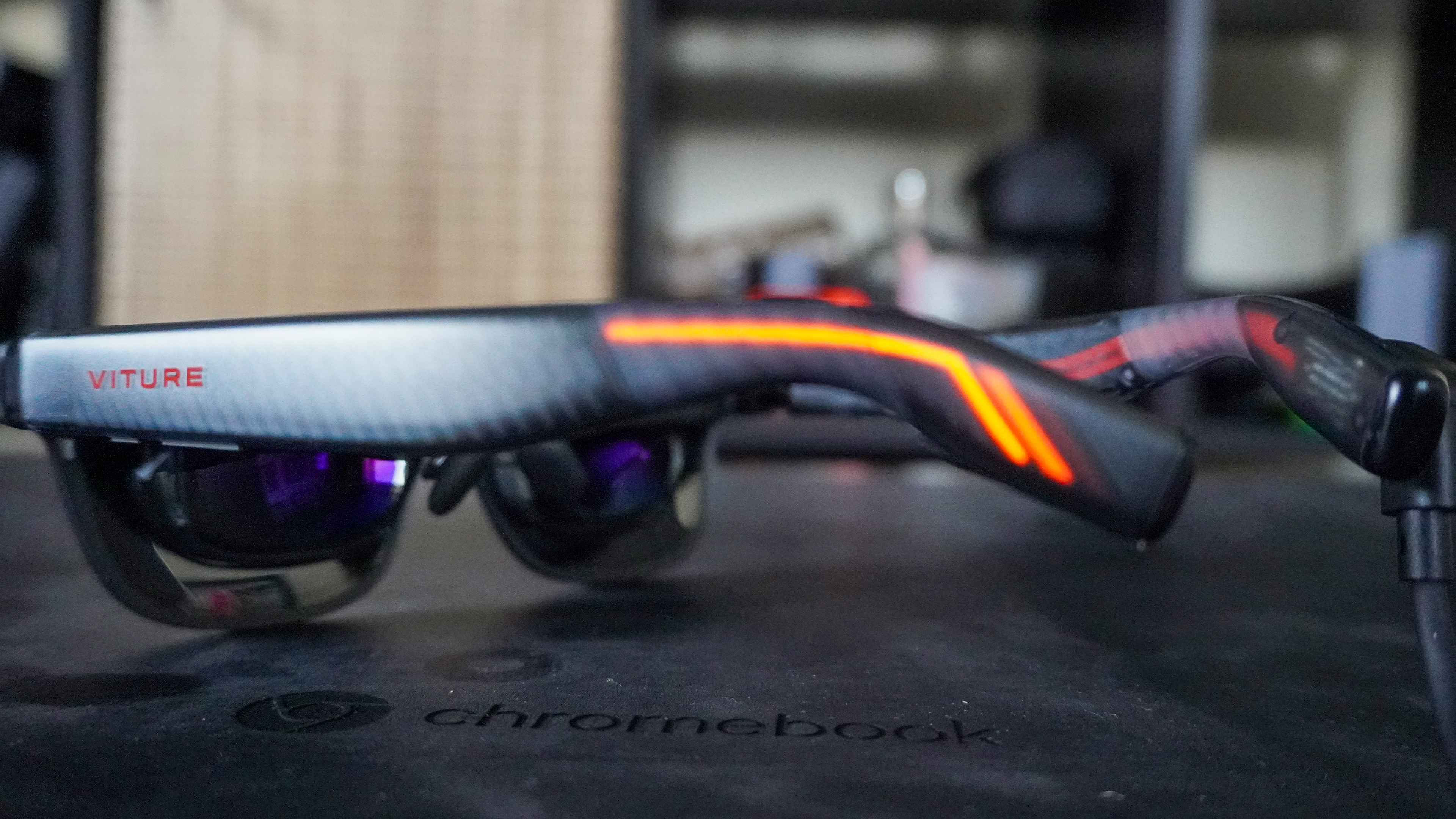
And the soft touch plastic sits over the ears to make these impressively comfortable over many hours of wearing — even on long haul flights or during an entire day at work. Oh, and shoutout to the subtle lighting effects along the glasses. Normally, I find RGB pretty cringe, but these refined details give them an edge that I’m pretty into.
Viture Luma Pro: The downs
As I got into my second week of testing the Viture Luma Pro, I realized that there are a couple problems. One that is (unfortunately) unavoidable in AR glasses, and another that’s just a waiting game.
Audio is lacking
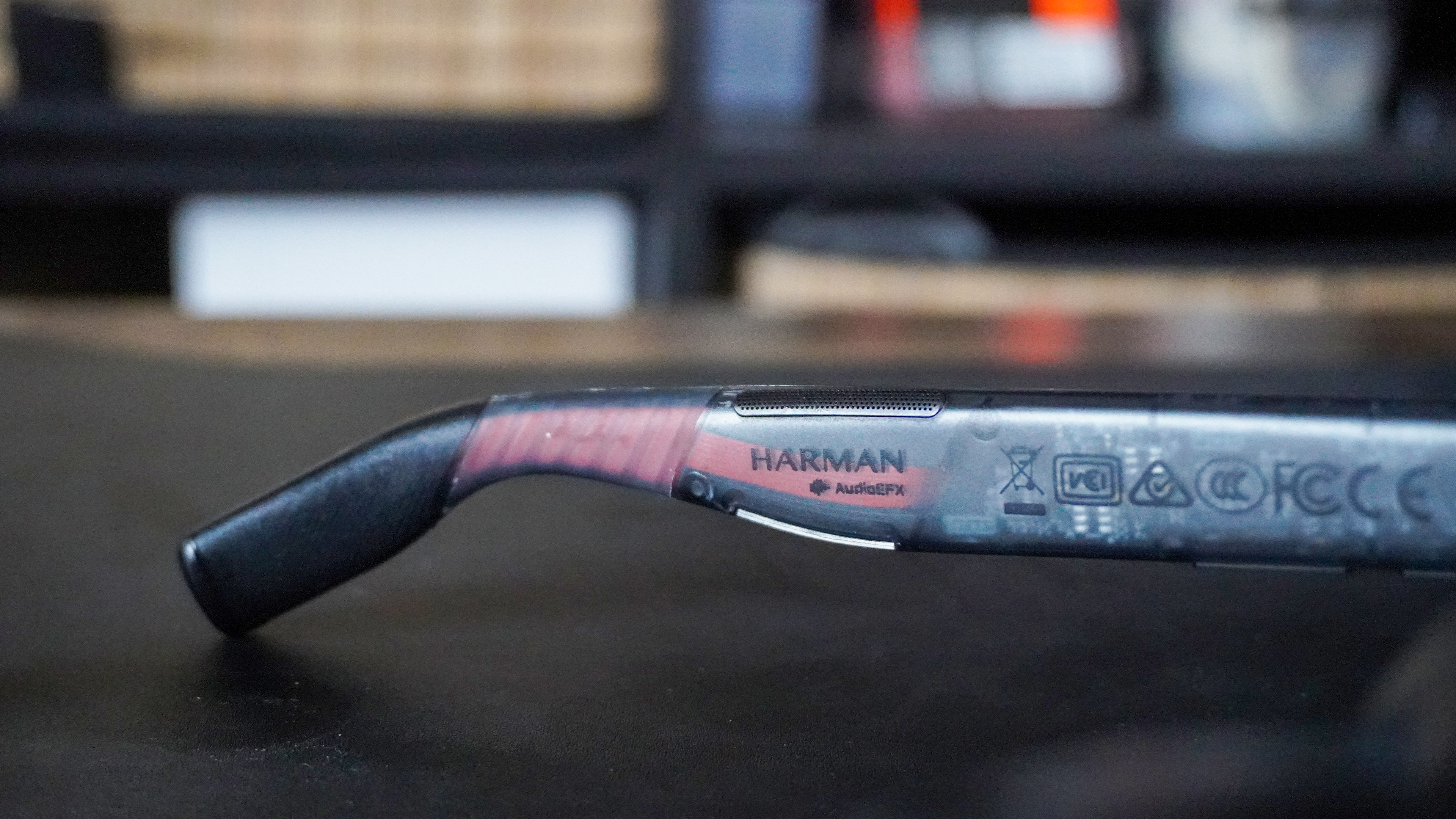
You can do all the Harman tuning you want to tiny stereo speakers in the stalks of a pair of glasses. At the end of the day, they’re still tiny speakers, and they do all the tiny speaker things you expect tiny speakers to do… Did I say tiny speakers enough? I think so.
Hats off to the private listening tuning Viture has done, as there is very minimal audio bleed if you do use them out and about. But a pair of headphones is absolutely necessary for using these — sound at max volume is drowned out by background noise easily, and the tinniness is pretty grim when you’re somewhere quiet.
Not quite finished yet
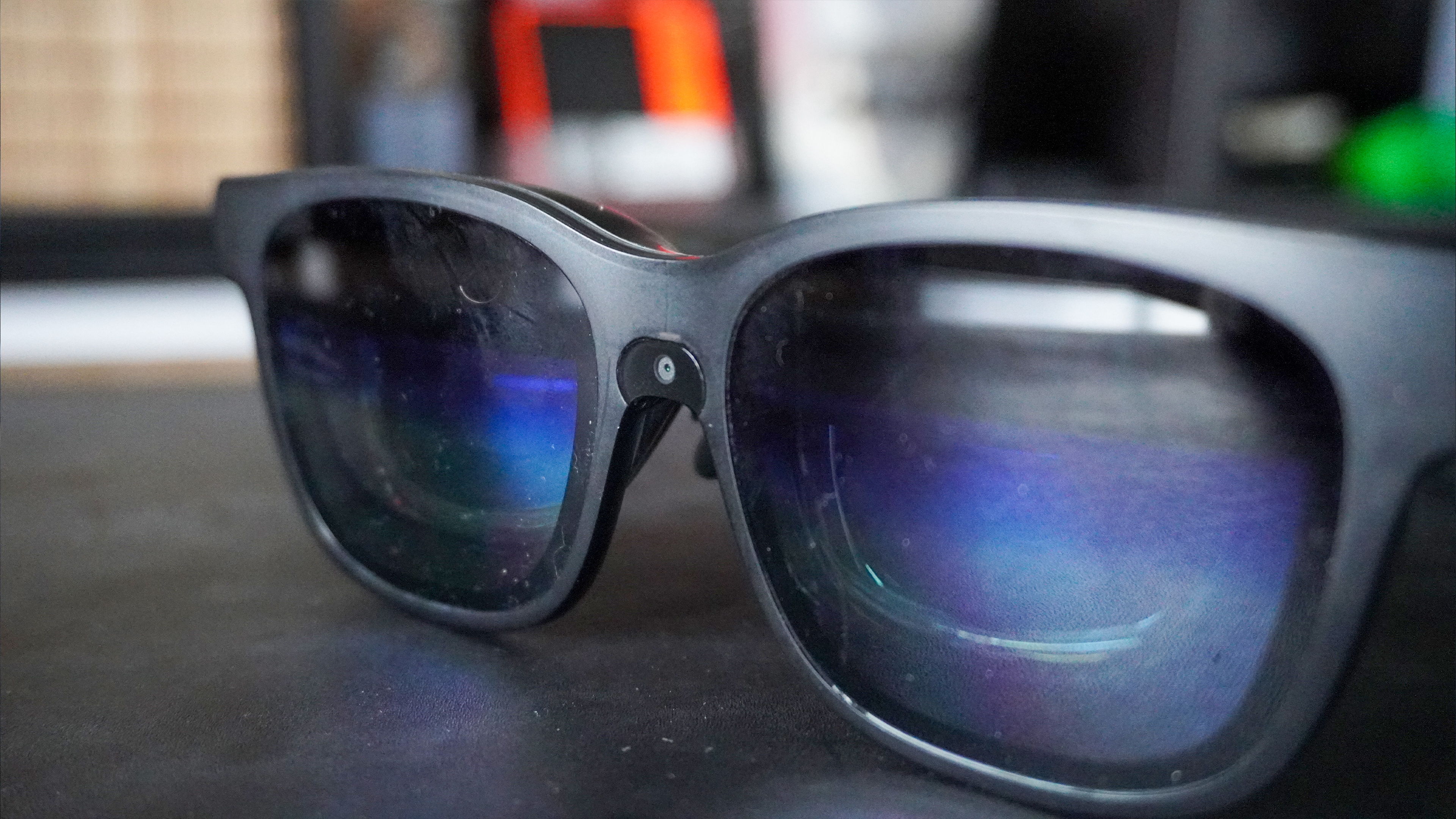
Let’s be real — while there are many companies selling AR glasses, the main competition at the moment comes down to Xreal vs Viture. But on top of that, there’s a wider competition happening, which I’ll call hardware vs software.
You see, Xreal is doing a lot of its display trickery on-device with silicon. Thanks to the X1 chip, you can simulate a 32:9 ultrawide display, change screen size and edit settings directly on the specs.
Viture’s doing pretty much all of it through software, and while it takes more time to setup the Spacewalker app or Immersive 3D app on your devices to get exactly what you want, you get more options for it.
Be it a vertical triple display array or the surprisingly impressive trick to intelligently turn 2D content into 3D, it all works really well! But the issue at the moment is that not everything is available just yet.
For example, there’s a built-in camera that can be used for both snapping and 6 DoF tracking for holding windows in place in front of you. These will be enabled after launch, so at the moment, I’m having a very similar experience to the Viture Pro, but with a far prettier picture.
Yes, I’ll return to this when the updates activate the 6 DoF capabilities of that camera. But at this point in time, Xreal has the more fully-featured specs. But I’ll come back to this post-launch when everything is here.
Viture Luma Pro: Verdict
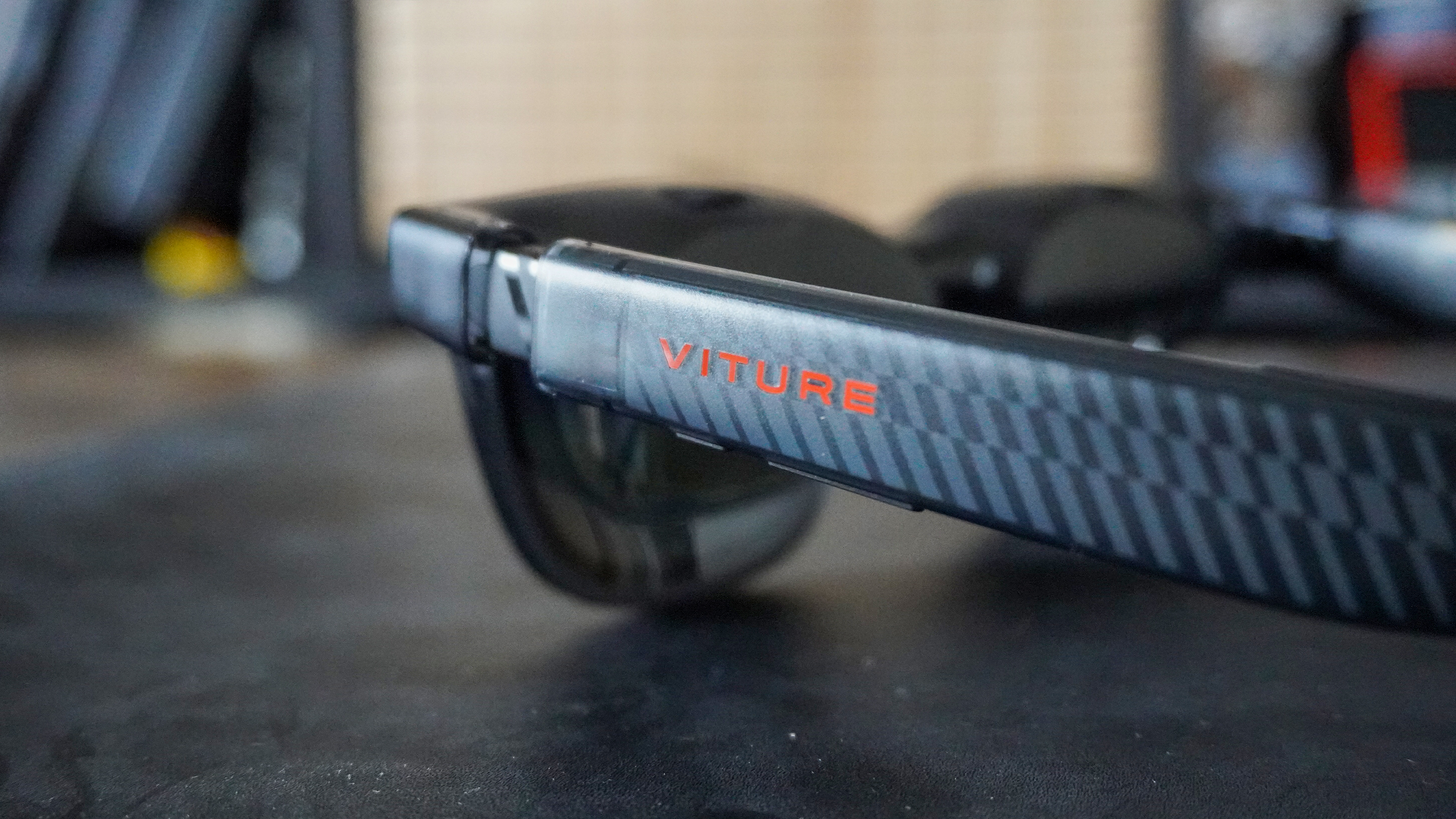
So let’s get the obvious out the way. Are the Viture Luma Pro specs the best AR glasses you can buy? One of them, yes. The picture quality is immense, and the software capabilities do make them more versatile in a spatial computing world.
But in a straight fight, it's honestly a toss up between these and the Xreal Ones. We are still waiting on some of the promised software features in an update, and being honest, doing the display processing on the device does benefit the Xreal Ones too.
However, there’s something special here in that display clarity and color that makes the Luma Pro oh-so impressive whatever the device you plug them into. Honestly, whichever way you go, you're getting greatness here at a competitive price.
So if you're a display snob, Viture's got you covered.

Jason brings a decade of tech and gaming journalism experience to his role as a Managing Editor of Computing at Tom's Guide. He has previously written for Laptop Mag, Tom's Hardware, Kotaku, Stuff and BBC Science Focus. In his spare time, you'll find Jason looking for good dogs to pet or thinking about eating pizza if he isn't already.
You must confirm your public display name before commenting
Please logout and then login again, you will then be prompted to enter your display name.
